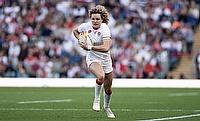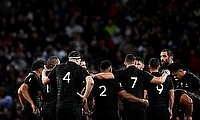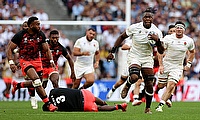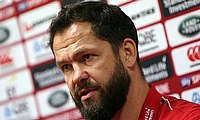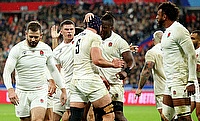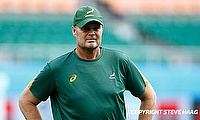Fixing England's breakdown
It is no coincidence that the two teams that made it to the Rugby World Cup final, New Zealand and Australia, were the two most skilled breakdown teams in the competition.
Obviously breakdown proficiency wasn’t the sole reason they made it all the way to rugby’s showpiece game, but it certainly played a significant role in their journeys. With referees having taken a far less lenient stand to the contact area than many northern hemisphere sides are used to, the home nations and France struggled to compete with the Rugby Championship teams over the last month and a half.
Even Wales and Ireland, with their well-balanced back rows, struggled in this area, but it was the host nation, England, who looked most out of their depth.
It has led to choruses of calls for Chris Robshaw to be axed and Steffon Armitage to be called up, while phrases like ‘fetcher’ and ‘natural openside’ have seemingly replaced the day-to-day lexicons of the vast majority of English rugby fans.
Unfortunately, it’s just not that simple, nor does Robshaw warrant that kind of criticism given his performances for England over the last cycle. Before England even move to address their ability to steal opposition ball and find their answer to David Pocock or Richie McCaw, they need to ensure they can protect their own ball. There’s really not much point pilfering ball at the breakdown if you’re then only going to give it away a phase or two later.
Where England struggled first and foremost during the RWC was in their inability to clear out the opposition at the contact area. More worryingly, their struggles weren’t just limited to archetypal and effective fetchers such as Pocock and Sam Warburton, as plenty of backs proved to be immovable objects for the English ruckers.
England are often harangued for their lack of a traditional fetcher, but the silver lining of this has been that they have been able to field two very abrasive ruckers on their flanks and this has helped keep them competitive at the breakdown when they have not necessarily had an elite ‘over the ball’ option to call upon. Obviously the tight five has to contribute to this as well, but one of the biggest surprises at this RWC was how ineffective both Robshaw and Tom Wood were at clearing out these counter-ruckers, a task they normally excel in.
With neck rolls now heavily pinged for safety reasons, ruckers have less options for removing defenders. England seemed to struggle with this more than most, often coming in far too high and trying to drag defenders away from the contact area. Any counter-rucker worth his salt will have his feet widely spread, centre of gravity over the ball and will be all but impossible to dislodge in this fashion.
There’s no reason why Robshaw and Wood can’t return to being effective in this area during the season, but there are alternatives. Robshaw’s Harlequins teammate Luke Wallace is a player who has been knocking on England’s door for a while now and has started the 2015/16 season in very good form.
Below, you can see Wallace performing the perfect ‘duck and clear’ ruck technique on a Wasps defender. Wallace arrives quickly at the newly-formed contact area, gets lower than the Wasps defender, who is positioning himself over the ball, and then gets underneath him and drives him up and off the ball.
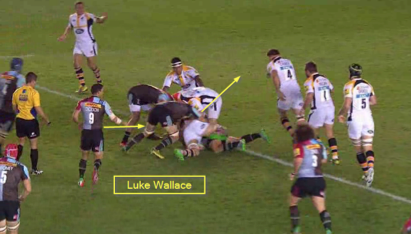
With opensides (and players in general) around the world getting in over the ball quicker, what is required now is not bigger, stronger ruckers, but swifter, more flexible ones. Given how agile and low defenders can make themselves these days, attacking sides need to ensure they have players capable of matching that, otherwise defences will begin to dominate the breakdown.
In addition to Wallace, the likes of Dave Ewers, Jack Clifford and even Sam Jones (if he can stay fit) have all shown plenty of potential in this area and should be in the conversation come the 2016 Six Nations.
Once England are confident in their ability to retain their own ball, then they can start thinking about stealing the opposition’s.
The old archetypes of the back row had seemed to be dying out a little, particularly in the northern hemisphere and South Africa, but with a strong southern hemisphere approach to refereeing at this RWC, the value of a fetcher with a low centre of gravity has skyrocketed over the past month and a half.
It’s fair to say that none of Wood, Robshaw or Billy Vunipola currently provide this at the highest level in the England back row. Where previously they might have got away with putting their hand on the grass beyond the ball for a split second (to balance themselves), they are now penalised for it. They don’t have, or at least didn’t show during the RWC, the precision in this facet that the likes of Pocock or Francois Louw do for 80 minutes a game.
Just look at the body position of Louw in the image below. That is textbook technique and makes him very difficult for New Zealand to dislodge. Kieran Read tries burrowing in from the side but ends up falling straight to the ground and there is no one else near enough to prevent the Springbok from stealing the ball.
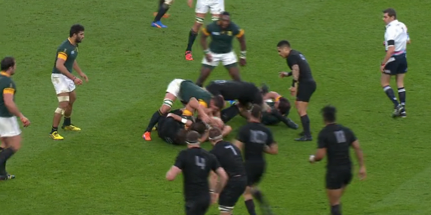
For all the qualities of Robshaw and Wood, of which there are many, this is not one of them, or at least not one that they can replicate four or five times during a game.
If England are to look for fresh blood that can do so, they would be well advised to, fitness-permitting, give Saracens’ Will Fraser an opportunity. Based solely on his ability to get in and over the ball and then limpet on to it, he may be the best player not named Louw in the Aviva Premiership.
As you can see below, Fraser was so quick in that Gloucester’s support was still a good yard away by the time he first got his hands on the ball.
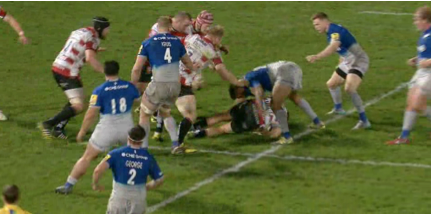
All three of the Gloucester players proceeded to converge on Fraser, but not one of them could get lower than the Saracen and drive him up and off the ball. Fraser’s hands went straight to the ball, not needing to steady himself illegally, and he ultimately wins his side a game-winning penalty.
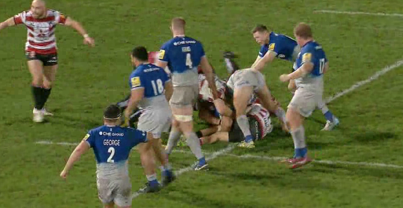
Fraser did brilliantly to force Gloucester into conceding the turnover and it was the perfect marriage of excellent technique and outstanding core and leg strength. It’s what Pocock has been doing all year long for the Brumbies and Australia.
Unfortunately, the issue surrounding Fraser has been that he has previously been fairly injury-prone and those injuries have thus far denied him an opportunity with England. If he can stay fit between now and the Six Nations, and continue to play at this kind of level, he should walk into the England squad, but there are alternatives in the unfortunate case that he can’t.
Gloucester’s Matt Kvesic is a very solid option who needs an opportunity to show that he can step up to test level, while the aforementioned Clifford has also been making people sit up and take notice at Harlequins.
If the English referees take the strictness with which they have refereed the contact area at the RWC and bring it to the Premiership, all three of these players will improve and be better prepared for the demands of international rugby simply because it will have been drummed into them all season long that they cannot get away with anything but precision.
If the truth is told, England haven’t been a great breakdown team since 2003. They have got by and been good at times since, but they’ve not once had the same balance which allowed them to dominate in that area during their run to RWC glory 12 years ago.
No one is comparing the likes of Wallace and Fraser to Richard Hill and Neil Back, but they’ve proven they have what it takes to succeed in the Premiership and the only way they can truly be gauged at international level is by throwing them in at the deep end of the test match swimming pool.






